GoPro Hero 10 Black vs 11 Black
Should you buy the new feature-packed GoPro Hero 11 Black or spend less and pick up the excellent GoPro Hero 10 Black?
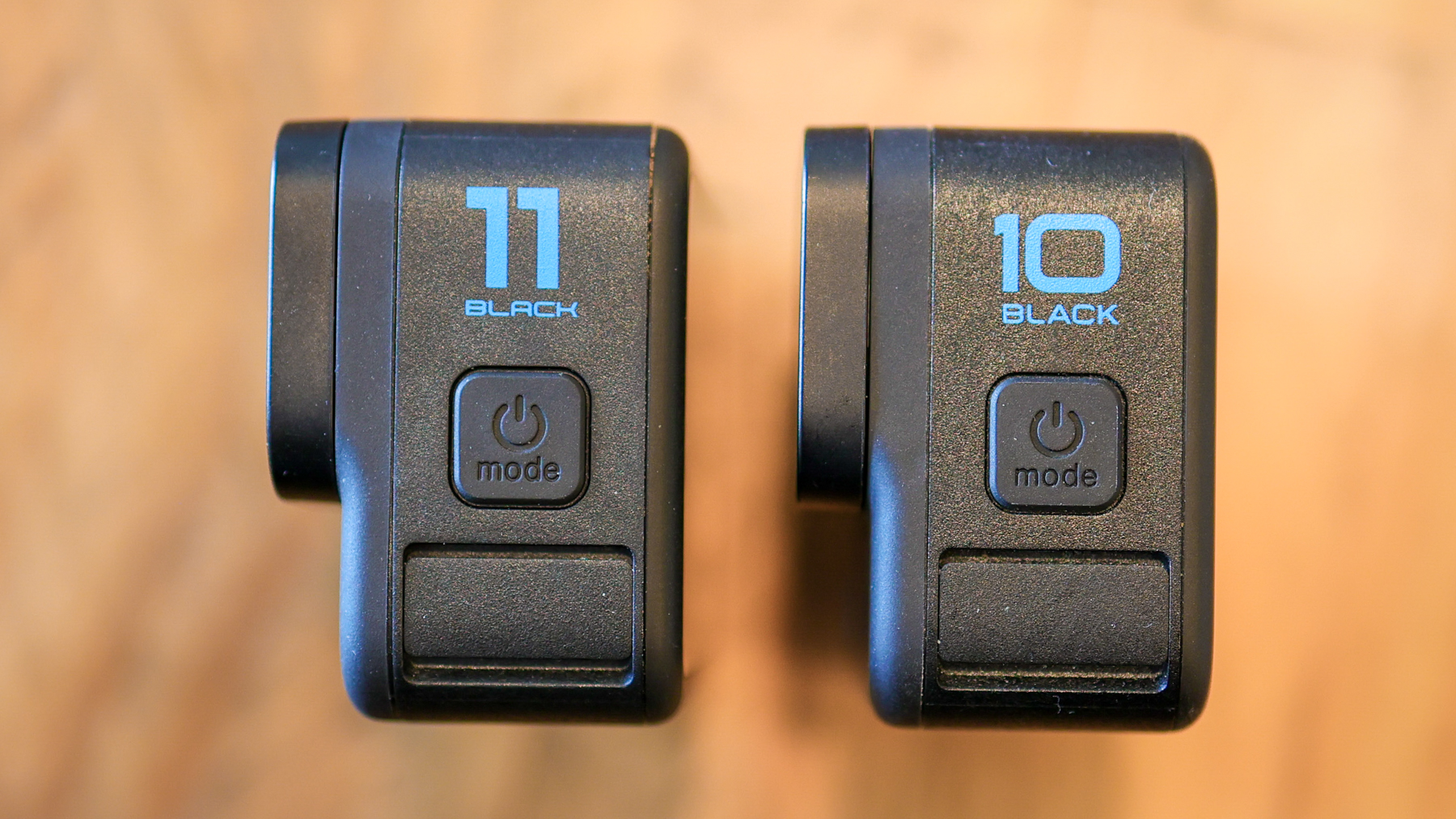
GoPro Hero 10 Black vs Hero 11 Black – which should you choose? Neither is the latest model and if you check our guide to the best action camera you'll see we're no longer sure GoPro get the crown. If you are brand loyal, you can check our the best GoPro guide and you'll see the Hero 11 Black still beats the newer Hero 12 Black (which drops the cool GPS feature).
If – despite time marching on – you’re looking at the GoPro Hero 10 Black in comparison to the new GoPro Hero 11 Black (perhaps you've found a discount?), it can be a tough choice – after all, the two action cameras have a lot in common. They look virtually identical, packing the same dimensions and weight, with a removable lens and battery door, as well as flip-out feet for easy mounting.
The Hero 10 and 11 Black also both support GoPro’s extensive collection of Mods, which level up the action cameras with improved audio quality, HDMI out, and an even wider angle of view.
They also sport a 2.27-inch touchscreen around the back, while on the front is a smaller, square screen that isn’t touch-sensitive, but should help you frame up your vlogs.
There are loads of other similarities between them, from their three microphones to the fact they can both take the same batteries, so with all that in common, what’s different, and why would you pick the Hero 11 Black over the lower-cost 10 Black?
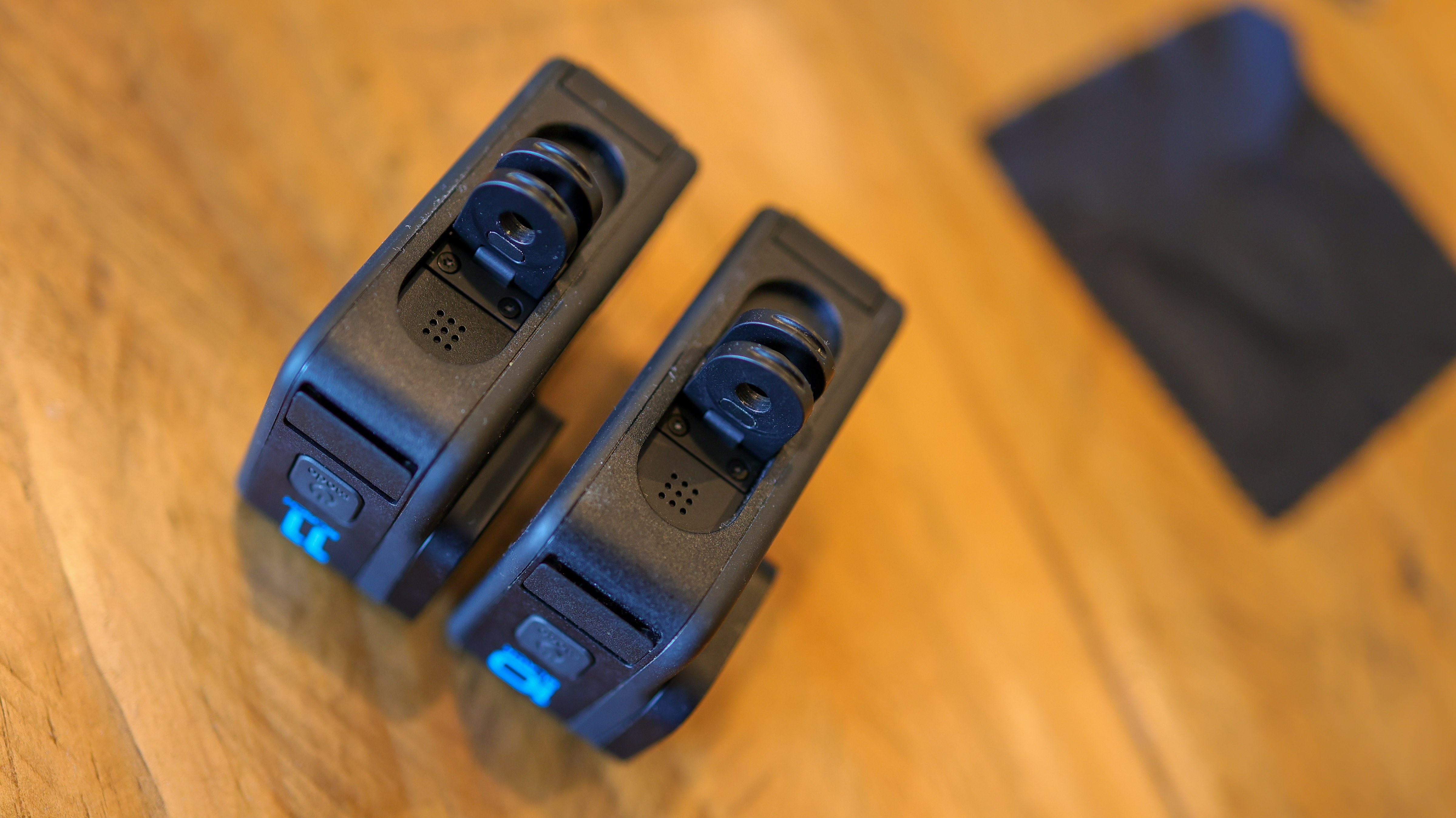
GoPro Hero 10 vs 11 Black
Why you can trust Digital Camera World
GoPro Hero 11 Black vs 10 Black: Resolution
• GoPro Hero 11 Black: 27MP
• GoPro Hero 10 Black: 23MP
When you eye over the spec sheets of the two Hero cameras, the first thing you’ll likely notice is the difference in megapixel count between the two. The Hero 10 Black launched with a 23MP sensor, while the 11 Black bumps that up to 27MP.
The higher resolution may make you think the GoPro Hero 11 Black captures more detailed snaps and video, but that isn’t necessarily true. The reason it has a higher resolution is that its sensor is a more square 8:7 aspect ratio – we'll explain the benefits in the next point.
While it doesn’t mean you get sharper 16:9 video, it does mean that 5.3K 30fps video can be captured at a large 8:7 aspect ratio. It also means you can grab 4K 60fps video at 8:7, and take near-square 27MP photos, versus 4:3 23MP photos on the Hero 10 Black.
2. Sensor shape and size
• GoPro Hero 11 Black: 1/1.9-inch, 8:7 sensor
• GoPro Hero 10 Black: 1/2.3-inch, 4:3 sensor
The GoPro Hero 11 Black features a larger 1/1.9-inch sensor than that of the Hero 10 Black. While normally, when we talk about bigger sensors, that means superior low light performance and shallower depth of field, those aren’t where the 11 Black edges ahead of the 10 Black. The larger, 8:7 sensor is, simply put, more versatile.
Shoot in 8:7 and simply crop to 1:1, 4:3, 16:9, or 9:16 – so your clips can be crisp whether you’re cutting them up for Instagram, TikTok, or YouTube. The new GoPro Quick app for Android and iOS supports simple exporting with a host of preset aspect ratios. This is the closest an action camera has ever gotten to making videos feel almost as manageable as photos when it comes to editing.
3. 8-bit vs 10-bit color
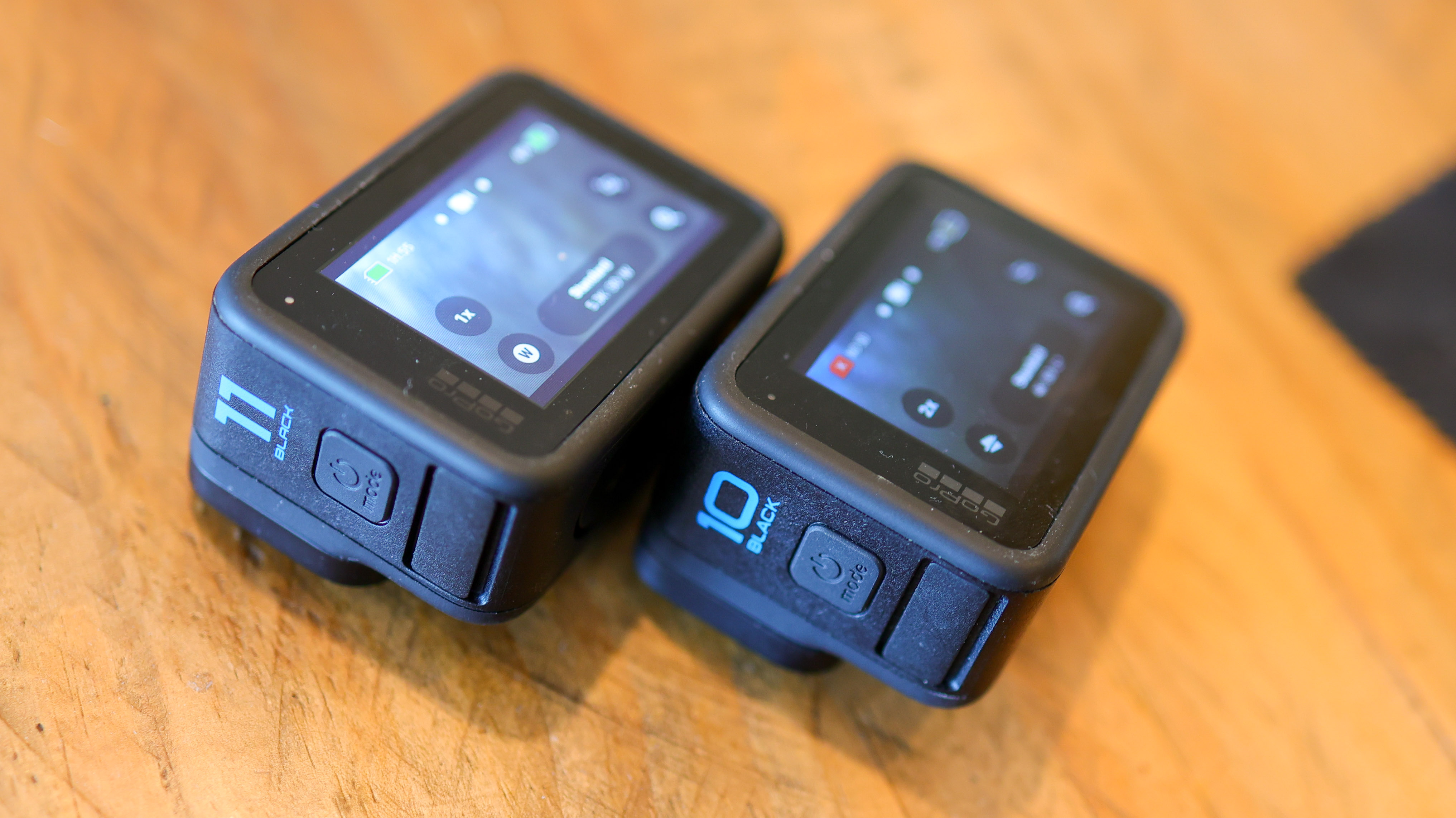
• GoPro Hero 11 Black: 10-bit color
• GoPro Hero 10 Black: 8-bit color
Loads of phones have launched with 10-bit color in the last couple of years, and GoPro’s jumping on the 10-bit train, making its Hero 11 Black the first 10-bit action camera around.
If you’re unsure what 10-bit color is, the term refers to the number of colors captured by a camera. 10-bit cameras capture over 1 billion colors. By contrast, the Hero 10 Black’s 8-bit camera captures 16.7 million colors.
This will be most noticeable with smooth gradients. For example, a 10-bit camera will capture less color banding in the sky. It also impacts the codecs used when recording video and capturing photos. If you’ve noticed your phone capture HEIF photos, that’s a 10-bit file format, so it means you’ve got a 10-bit phone.
Materially, this will make a difference to the quality, adding a degree of refinement to your footage. It probably wouldn’t standalone sway us to stump up for the 11 Black over the 10 Black – but the new stabilization system might.
4. HyperSmooth 4.0 vs 5.0
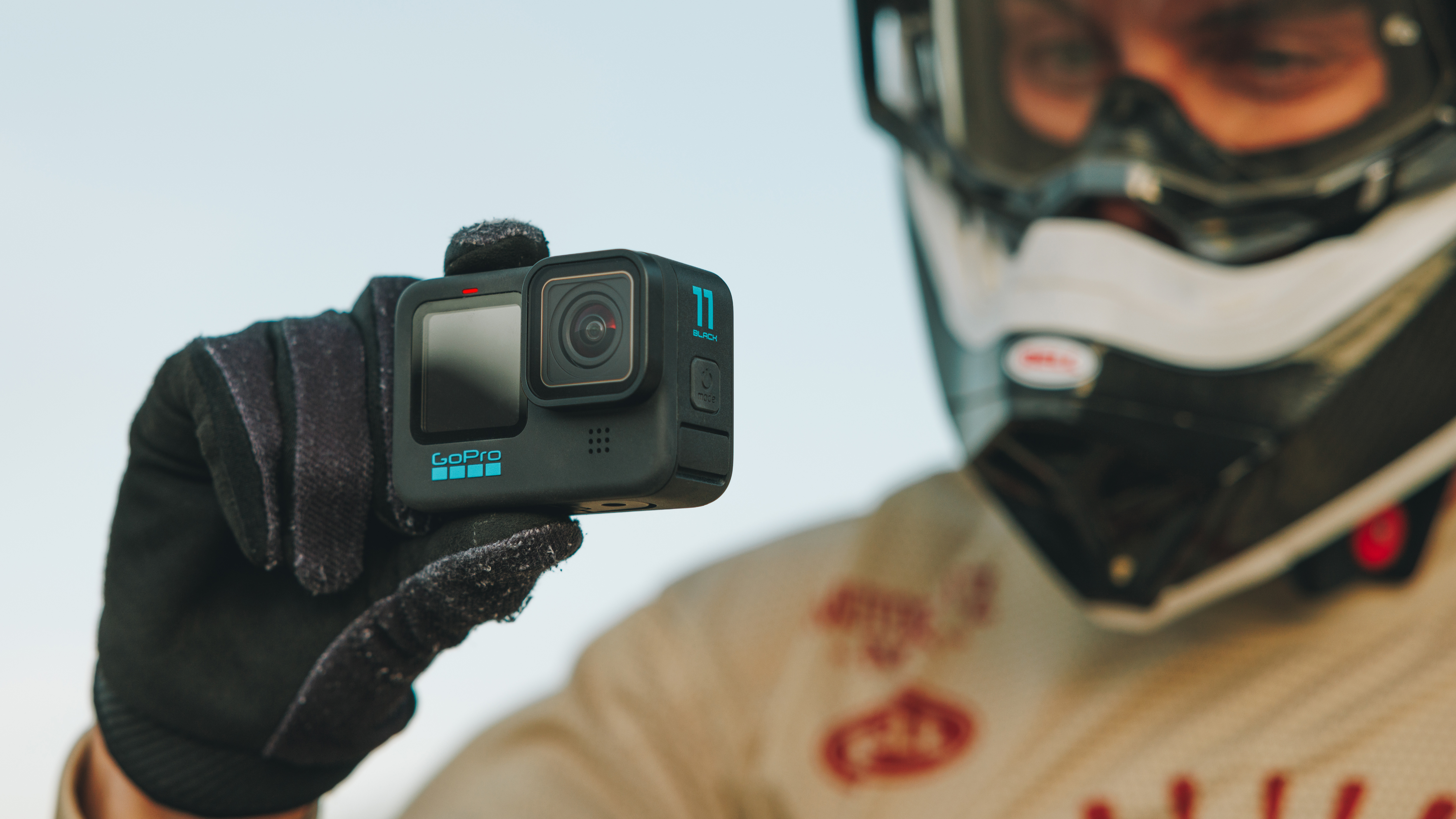
• GoPro Hero 11 Black: HyperSmooth 5.0
• GoPro Hero 10 Black: HyperSmooth 4.0
Thanks to the new sensor shape, the GoPro Hero 11 Black has much more image to crop into and stabilize. That means the camera can now shoot stabilized 4:3 aspect ratio video with a SuperView lens – mighty impressive. By contrast, the Hero 10 Black’s best stabilization can be had when shooting 16:9 content.
GoPro’s stabilization is smarter this time around, too. Thanks to a new AutoBoost mode, the Hero 11 Black can autonomously adjust stabilization modes, only activating HyperSmooth when the camera detects shake to maintain the widest field of view possible throughout the recording.
5. 360º Horizon Lock
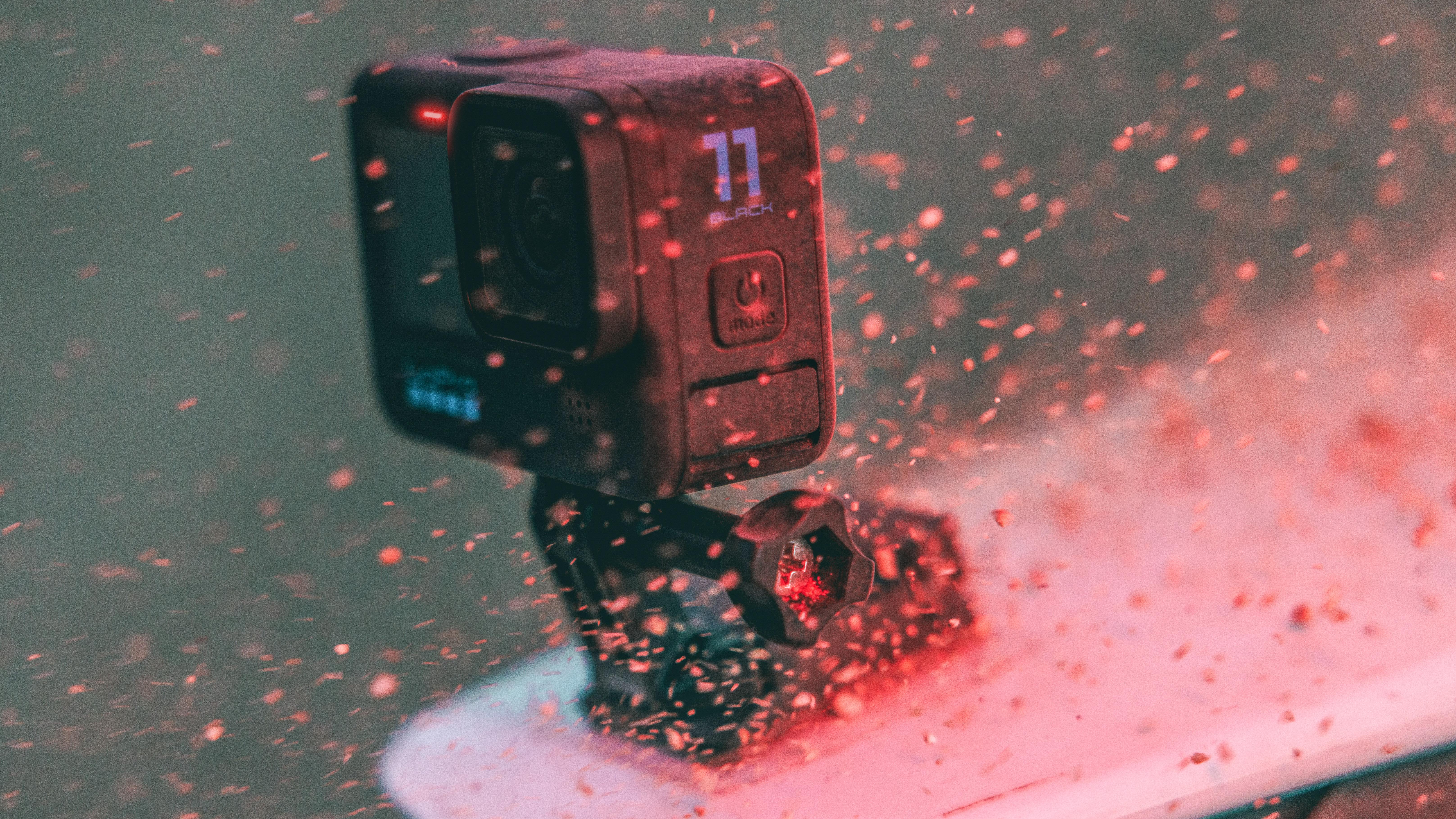
• GoPro Hero 11 Black: 360º Horizon Lock
• GoPro Hero 10 Black: 360º Horizon Lock only with Max Lens Mod accessory
Continuing on the theme of stabilization, it’s time to talk about one of our favorite Hero 11 Black features, Horizon Lock. The Hero 10 Black could hold the horizon steady, but you needed to match the camera with a GoPro Max Lens Mod to activate Horizon Lock. The 11 Black, however, does it out of the box, and all the way up to 5.3K resolution to boot.
To recap, the GoPro Hero10 Black does support Horizon Leveling, but that’s only to a 27º angle. The Hero 11 Black can be rotated through 360º, and you’d never know, with the footage looking as level as a well hung painting.
The only limitation when it comes to Horizon Locking at 5.3K is the frame rate and aspect ratio. The Hero 11 Black caps out at 24 or 30fps, and the aspect ratio’s also locked to 16:9. If you want to break through the frame rate ceiling, you can drop the resolution and Horizon Lock at 4K 60fps or 2.7K/1080p 120fps.
6. Superview vs Hyperview
• GoPro Hero 11 Black: HyperView captures 8:7 and reformats it to 16:9
• GoPro Hero 10 Black: SuperView captures 16:9 with slightly less wide vertical field of view
Yes, the new sensor shape also means you can capture photos and videos with an 8:7 aspect ratio, but that also means you can see more stuff. Specifically, it increases the vertical field of view by 16 percent over that of the Hero 10 Black.
GoPro doesn’t just boost the field of view when you’re shooting in 8:7. It also squishes it down into a distorted 16:9 frame to create HyperView. GoPro calls this an “ultra-immersive POV that amps up action-oriented footage by capturing more of you and your surroundings”, and it’s only available on Hero 11 Black.
Meanwhile, the Hero 10 Black captures in SuperView, which shoots with a traditional 19mm focal length (16mm if distortion is left uncorrected).
7. Night effects
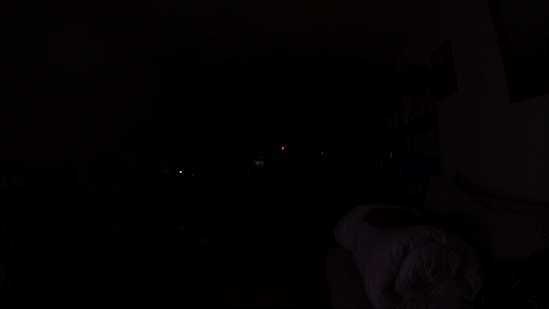
• GoPro Hero 11 Black: Features host of Night Effect modes
• GoPro Hero 10 Black: No Night Effect Modes supported
GoPros have never been great nighttime video cameras, and that isn’t about to change when it comes to traditional video capture. So, GoPro’s taken a leaf out of smartphone makers’ books and opted to introduce some fun computational photography modes to the Hero 11 Black.
Our favorite of these night modes is Light Painting, illustrated above. Using a long exposure, the mode creates brush stroke effects with moving light. Unlike phones, which create a still image, though, the Hero 11 Black creates a bite-sized video clip with super-low exposure and noise and just a crisp, clear streak of light where a subject has painted with light.
Vehicle Light Trails is a self-explanatory night effect, turning a river of brake lights into a flowing stream, once again using a long exposure in dark environments to create light trails from moving vehicles.
Star Trails is the third GoPro night effect, and it uses the earth’s rotation to create bright, starry lines across the sky.
8. Battery
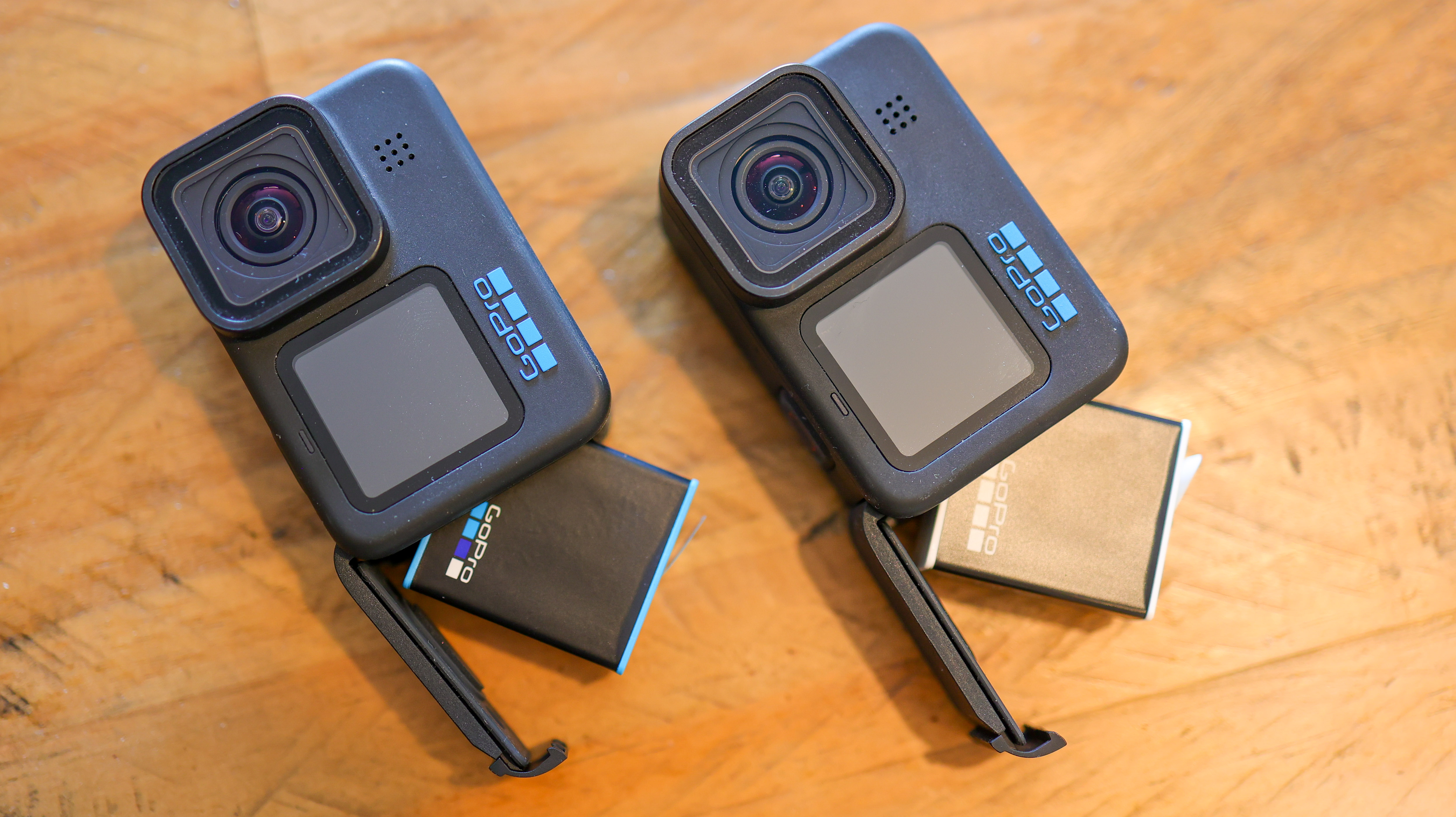
• GoPro Hero 11 Black: Enduro battery and features more efficient software
• GoPro Hero 10 Black: Standard battery and less efficient software
Technically speaking, the GoPro Hero 11 Black doesn’t introduce a new battery technology. It does, however, ship with an Enduro Battery, which GoPro launched shortly after the Hero 10 Black was announced. It also promises optimized firmware.
When it comes to numbers, the GoPro Hero 11 Black can shoot 5.3K video at 30fps for 80 minutes on a single charge, versus 73 minutes when using the Hero 10 Black.
GoPro also promises superior day to day efficiency when using the 11 Black, with the camera’s power consumption during idle being lower, and there being a new, Low Power shooting mode that takes the thinking and manual mode selection out of efficient shooting.
09. Software complexity
The GoPro Hero 11 Black introduces an updated in-camera software experience, which makes it easier than ever to switch up your shooting modes, even if you’ve never used a GoPro before.
The 11 Black features an Easy mode. It packs fewer settings and capture choices so you can just frame your shot and hit the shutter button – simple.
If you’re a returning GoPro enthusiast, you can unlock more features in Pro Mode, which still comes with presets that let you choose the best settings for your shot, but also includes the ability to fine-tune all modes, settings, and features.
Whichever mode you shoot, the Hero 11 Black also gives you a quality override based on your power-saving requirements.
Mid-range quality shoots with video resolutions and frame rates that help you extend your battery life. While High-quality video resolutions and frame rates help you capture the best-looking footage possible without prioritizing battery.
Currently, GoPro’s Hero 10 Black doesn’t pack these easier-to-manage UI additions.
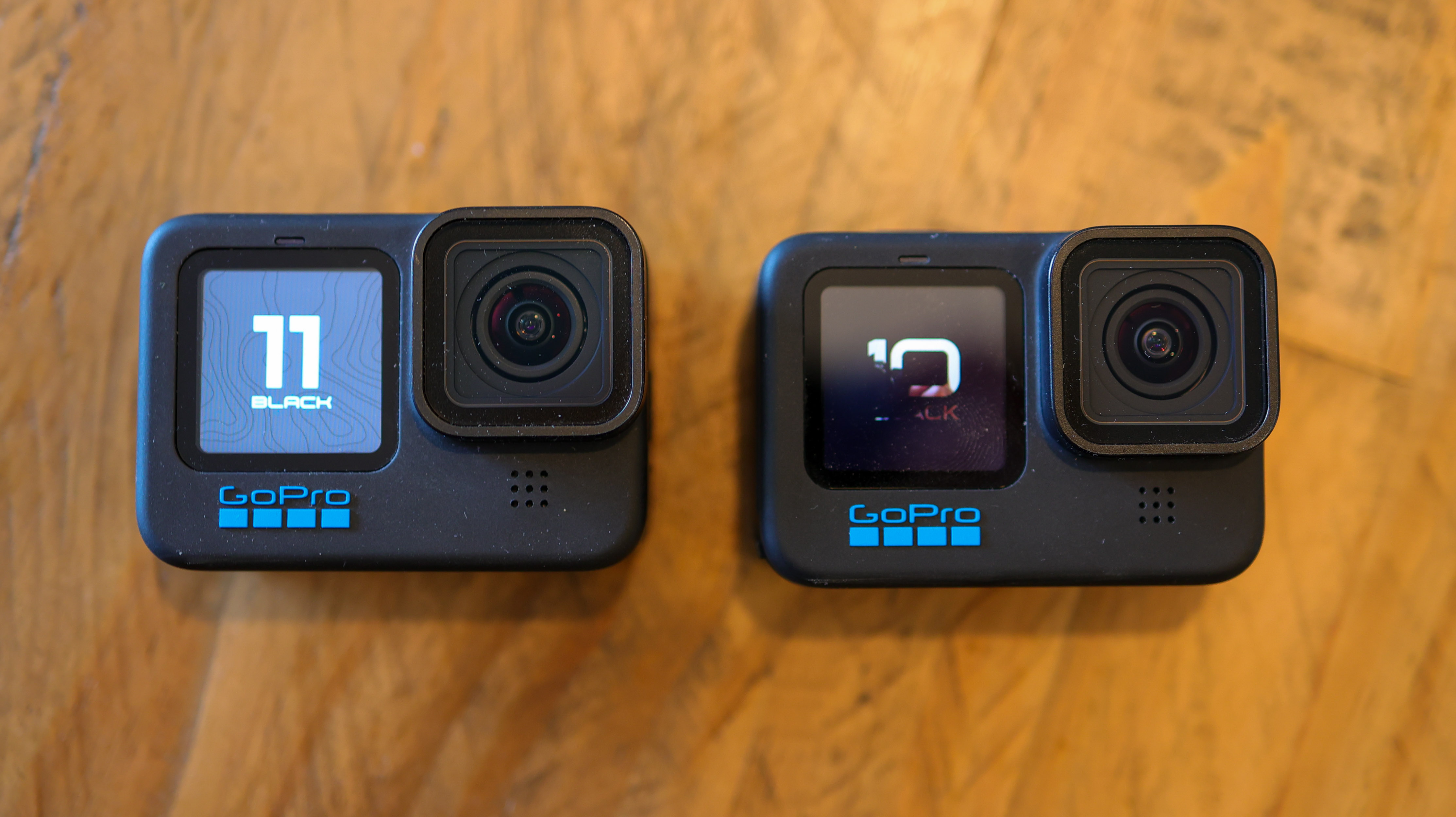
10. Price
The final word will, unsurprisingly, come down to price. The Hero 11 Black is the superior camera, but the 10 Black costs less.
Without a GoPro Subscription, the Hero 11 Black costs $549.98 / £549.98. With a GoPro subscription, the Hero 11 Black costs $399.98 / £399.98, while the Hero 10 Black costs $50 / £50 less with or without the subscription; check out our guide to the GoPro Subscription: what you get and is it worth it.
GoPro Hero 11 Black vs 10 Black: conclusions
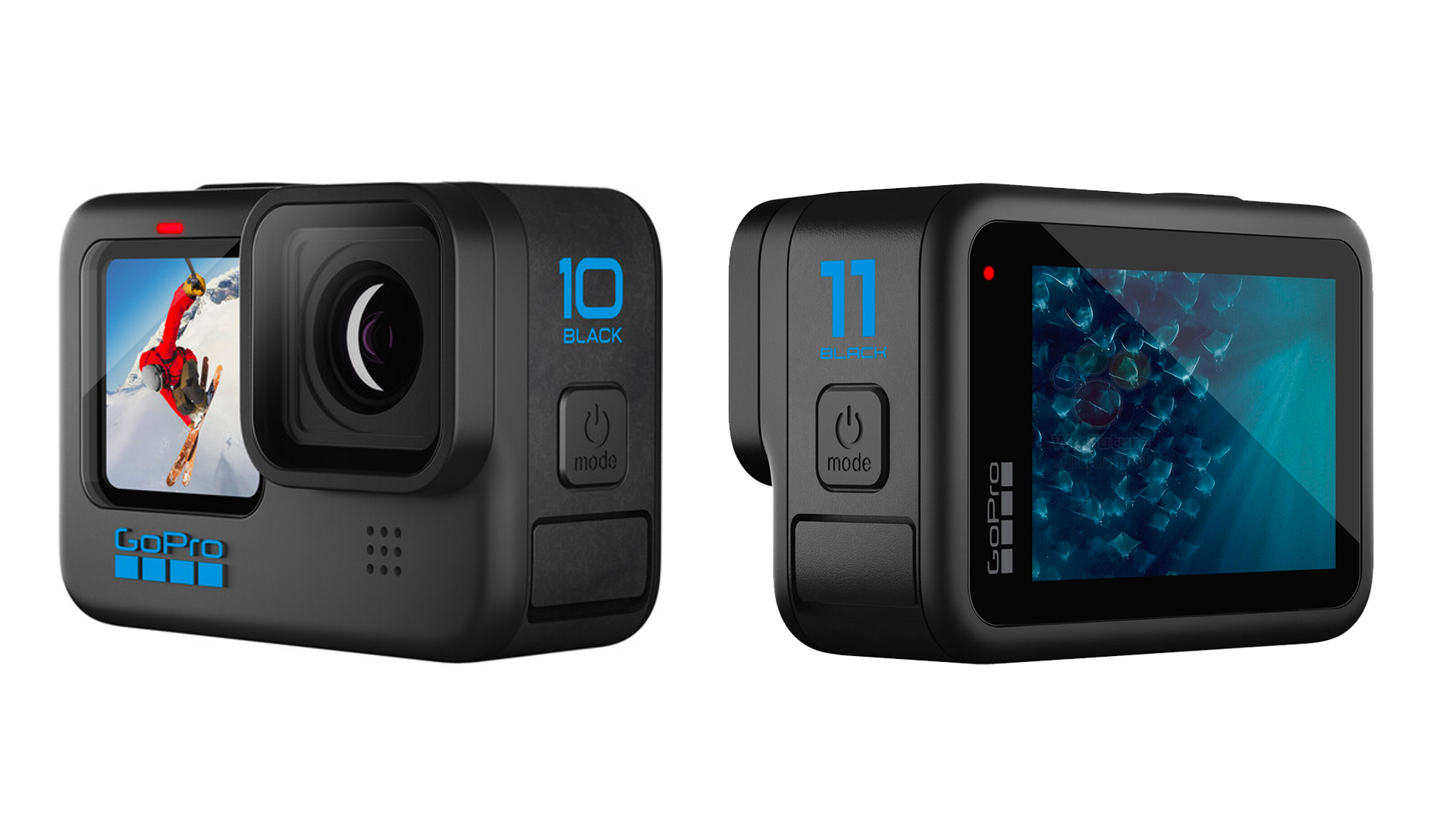
So if you were looking to buy a new GoPro action camera but didn’t think the identical-looking Hero 11 Black had anything over the Hero 10 Black, that clearly isn’t the case.
For advanced GoPro users who just want to grab high-octane 16:9 content and don’t care about editing, cropping or faffing with their footage, there’s a good chance the Hero 10 Black will be a good enough camera for you. It’ll save you $50 / £50, and still grabs steady videos at up to 5.3K resolution.
For anyone new to GoPro’s action cameras, the Hero 11 Black is the more user-friendly option. It also lasts longer, and is better suited to social media fans and vloggers, with its Horizon Lock feature being a real highlight.
While we’d argue that the new action camera is definitely worth that $50 / £50 bump in price, both the Hero 10 and Hero 11 Black are two of the best action cameras of 2022. So whichever Hero you go for, it will be poised to capture your mountain biking, snowboarding, and jet skiing adventures at high resolutions, frame rates, and quality.
See also:
GoPro Hero 11 Black review
GoPro Hero 10 Black review
GoPro Hero 9 vs 10 Black
Best GoPro accessories
Best action cameras
Best GoPro alternatives
Get the Digital Camera World Newsletter
The best camera deals, reviews, product advice, and unmissable photography news, direct to your inbox!
Basil Kronfli is a freelance technology journalist, consultant, and content creator. He trained in graphic design and started his career at Canon Europe before moving into journalism. Basil is also experienced in video production, independently running the YouTube channel TechEdit, and during his time at Future, he worked alongside the Digital Camera World team as a senior video producer.

